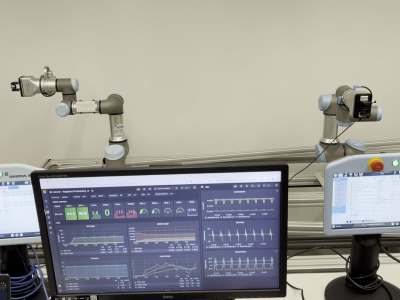Machine Learning
We provide two datasets extracted from Twitter, in Spanish and English, and annotate each one with approximately 1,500 users who have been diagnosed with one of nine different mental disorders (ADHD, Autism, Anxiety, Bipolar, Depression, Eating disoders, OCD, PTSD and Schizophrenia) along with 1,700 matched-control users.
- Categories:
 7578 Views
7578 ViewsThe proposed GAT-based channel estimation method examines the performance of the DtS IoT networks for different RIS configurations to solve the challenging channel estimation problem. It is shown that the proposed GAT both demonstrates a higher performance with increased robustness under changing conditions and has lower computational complexity compared to conventional deep learning methods.
- Categories:
 732 Views
732 ViewsUnlicensed coexistence networks and spectrum sharing are two relatively new technological paradigms in cellular technology. These wireless systems are standardized and adopted to help cellular operators meet the ever-increasing mobile data demand by efficient utilization of unlicensed bands. However, several incumbents are already operational in these frequencies such as military, radar, and navy systems rendering the wireless environment extremely dynamic and unpredictable.
- Categories:
 566 Views
566 Views
The project provides trained models of YOLOv3, YOLOv3-SPP, and YOLOv3-tiny for outdoor insulator detection and classification of the surface contamination, such as salt, snow, cement, soil and wet soil. The project is based on YOLOv3 implementation developed by Ultralytics/YOLOv3. The models were trained on custom insulator dataset consisting of 11816 images of different type insulators under various conditions.
- Categories:
 53 Views
53 ViewsSolar energy production has grown significantly in recent years in the European Union (EU), accounting for 12\% of the total in 2022. The growth can be attributed to the increasing adoption of solar photovoltaic (PV) panels, which have become cost-effective and efficient means of energy production, supported by government policies and incentives. The maturity of solar technologies has also led to a decrease in the cost of solar energy, making it more competitive with other energy sources.
- Categories:
 871 Views
871 Views
The liquid product H in stream 9 is considered as quality variable while 22 process variables XMEAS (1) – XMEAS (22) are selected as process variables. 960 samples are collected as training samples, and another 960 samples are collected as the test dataset in the same working condition.
- Categories:
 82 Views
82 Views
The drawback of inter-subcarrier interference in OFDM systems makes the channel estimation and signal detection performance of OFDM systems with few pilots and short cyclic prefixes (CP) poor. Thus, we use deep learning to assist OFDM in recovering nonlinearly distorted transmission data. Specifically, we use a self-normalizing network (SNN) for channel estimation, combined with a convolutional neural network (CNN) and a bidirectional gated recurrent unit (BiGRU) for signal detection, thus proposing a novel SNN-CNN-BiGRU network structure (SCBiGNet).
- Categories:
 205 Views
205 Views
Future 6G networks will consist of fully soft-warized networks that incorporate in-network intelligence for self-management. However, this intelligent management will require massive data mining, analytics, and processing. Therefore, we need resources like quantum technologies to help achieve 6G key performance indicators. We use Quantum Machine Learning (QML) to solve the controller placement problem for a multi-controller Software Defined Network (SDN). Network delay depends on the controller’s position.
- Categories:
 382 Views
382 ViewsIndustrial cyber-physical systems (ICPS), which is the backbone of Industry 4.0, are the result of adapting emerging information communication technologies (ICT) to the industrial control systems (ICS). ICPS utilize autonomous robotic arms to accomplish manufacturing tasks. These arms follow a certain predetermined trajectory during the task.
In this dataset, we present four files generated from a setup that contains two Universal Robot UR3e collaborative robotic arms:
- Categories:
 1010 Views
1010 ViewsThe data collection questionnaire consisted of two sections. One section involved the collection of data via Google Forms questionnaires, and the other involved the collection of WhatsApp voice samples. There were three subsections in the questionnaire section. The first consisted of the individual's basic information, such as email address, name, and identification number. The second was the personal health questionnaire depression scale (PHQ8), which included 8 groups of statements, and the third was the Beck Depression Inventory-II, which contained 21 groups of statements.
- Categories:
 810 Views
810 Views




